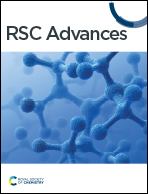Novel ultrasonic technology for advanced oxidation processes of water treatment
Abstract
Textile wastewater accounts for a significant proportion of industrial wastewater worldwide. In particular, dye wastewater accounts for a large proportion and consists of non-degradable dyes, which are substances resistant to biodegradation. Methylene blue is a representative example of such non-degradable dyes. It is not biologically degraded and exhibits toxicity. Various methods for their decomposition are currently being studied. Advanced oxidation processes (AOPs), which generate highly reactive hydroxyl radicals that oxidize and degrade pollutants, have been actively studied. Particularly, the photocatalytic degradation method using TiO2 nanoparticles is one of the most actively studied fields; however, there are still concerns regarding the toxicity of nanoparticles. Research is currently being conducted on AOPs using the cavitation phenomenon of ultrasonic waves. However, achieving high efficiency using existing ultrasonic equipment is difficult. Therefore, in this study, we evaluated a new water treatment technology through AOPs using a focused ultrasonic system with a cylindrical piezoelectric ceramic structure. After determining the optimal conditions for degradation, the degradation process was evaluated as a useful tool for mitigating the toxicity of methylene blue. We found that, under the optimal conditions of 100 W intensity at a frequency of 400 kHz, this system is a helpful instrument for degradation and a new water treatment technology suitable for removing ecotoxicity and genotoxicity.



 Please wait while we load your content...
Please wait while we load your content...